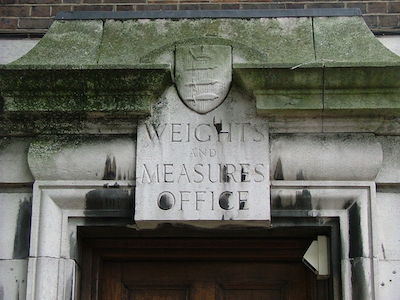As you probably already know, there are two main systems of measurement that are used all over the world: Imperial and U.S. Systems of Measurement.
Check out our conversion calculators.

The reality is that at the moment, the United States is almost the only country using the U.S. System of measurement. Canada was one of the countries that also used to use this measurement system. However, in 1971, the S.I. or the metric system was the one adopted by this country. As you can imagine, this transition wasn’t easy and it still isn’t. The reality is that there is the fact that people were used to using one measuring system and they need to start using a different one but there is also the fact that Canada continues to have strong ties to the United States. This means that many Canadian producers, especially the ones who live near the border with the United States, continue to use the U.S. Measuring system or both. In fact, most Canadian packages include both Canadian and U.S. or Imperial measurements on the label, and many suppliers still quote prices in cost per pound instead of cost per kilogram.
As you can see, changing from one measuring system to a different one is not easy.

Looking to convert cubic yards to cubic feet?
Here are the most commonly used units of measurement in the U.S. and Imperial Systems:
| Type of Measurement | Unit | Abbreviation |
| Weight | Pound | lb or # |
| Weight | Ounce | oz |
| Volume | Gallon | gal |
| Volume | Quart | qt |
| Volume | Pint | pt |
| Volume | Cup | c |
| Volume | Fluid Ounce | fl oz or oz |
| Volume | Tablespoon | Tbsp |
| Volume | Teaspoon | Tsp |
| Length | Mile | m |
| Length | Yard | yd |
| Length | Foot | ft or ‘ |
| Lenght | Inch | in or ” |
Discover how to convert gigabytes to megabytes.
The Differences Between Imperial And U.S. Systems of Measurement

One of the things that you may not know about the Imperial and U.S. Systems of Measurement is the fact that the difference only resides in the volume measurements. The truth is that the number of ounces in pints, quarts, and gallons are all larger in the imperial system, but the size of one fluid ounce is also different. Here are some of these examples:
| Unit of Measurement | Imperial System | Metric Equivalent | U.S. System | Metric Equivalent |
| 1 ounce | 1 (fluid) oz | 28.41 ml | 1 (fluid) oz | 29.57 ml |
| 1 gill | 5 (fluid) oz | 142.07 ml | Not commonly used | NA |
| 1 cup | Not commonly used | NA | 8 (fluid) oz | 236.59 ml |
| 1 pint | 20 (fluid) oz | 568.26 ml | 16 (fluid) oz | 473.18 ml |
| 1 quart | 40 (fluid) oz | 1.137 l | 32 (fluid) oz | 946.36 ml |
| 1 gallon | 160 (fluid) oz | 4.546 l | 128 (fluid) oz | 3.785 l |
Looking to convert joule to BTU?
So, when you are using a recipe written in cups and ounces, you should always check the source of your recipe to determine if it has been written using the U.S. or imperial system of measurement. The difference in volume measurements can be quite noticeable when producing large quantities.
If the recipe is from the United States you should use U.S. measurements for the conversion; if the recipe originated in the United Kingdom, Australia, or any other country that was once part of the British Empire, use the imperial system for the conversion.